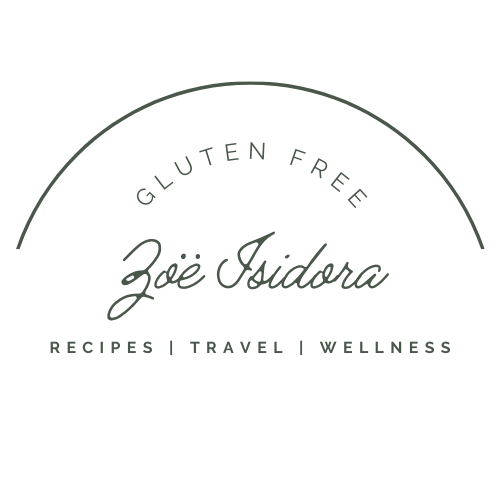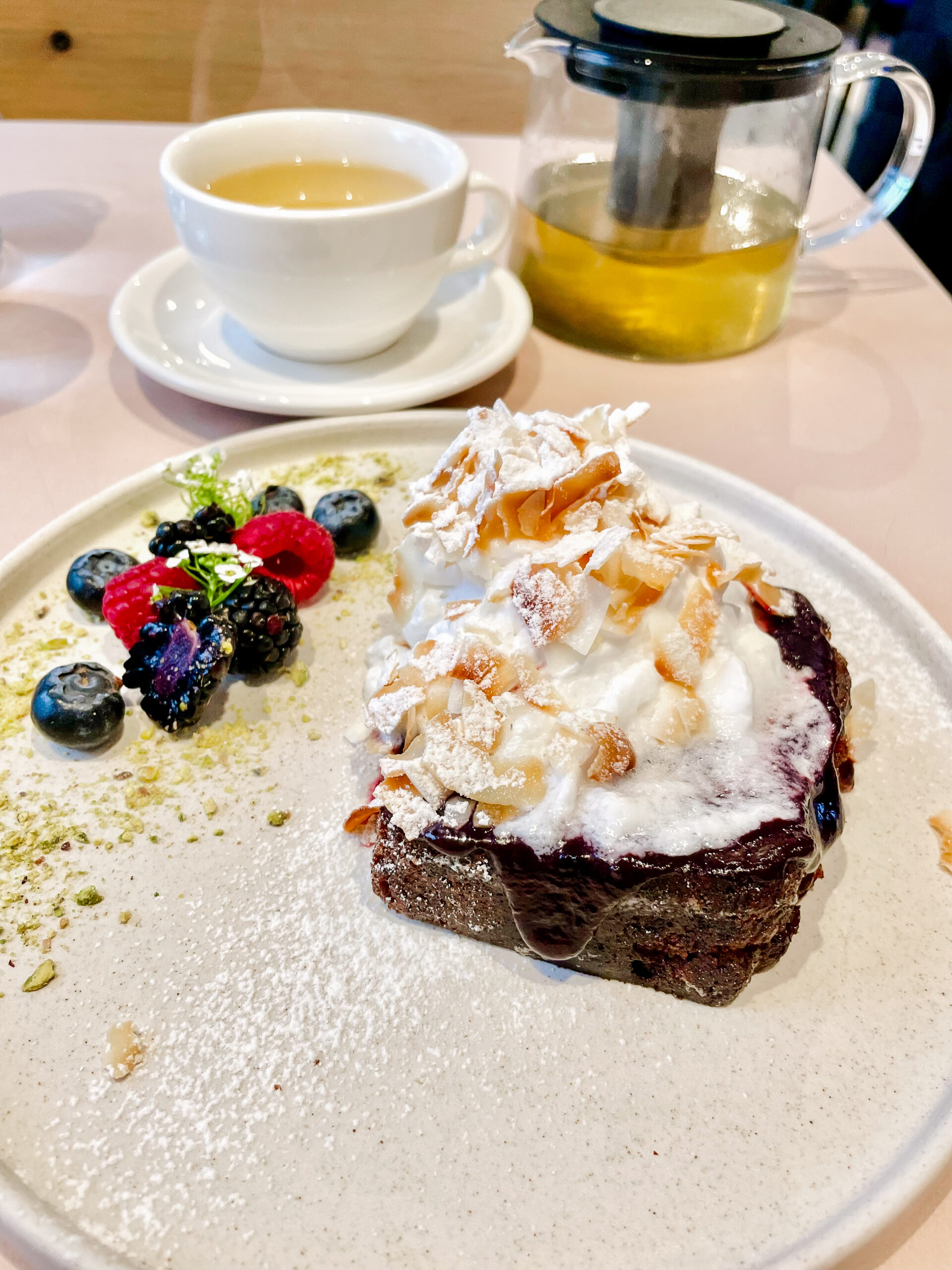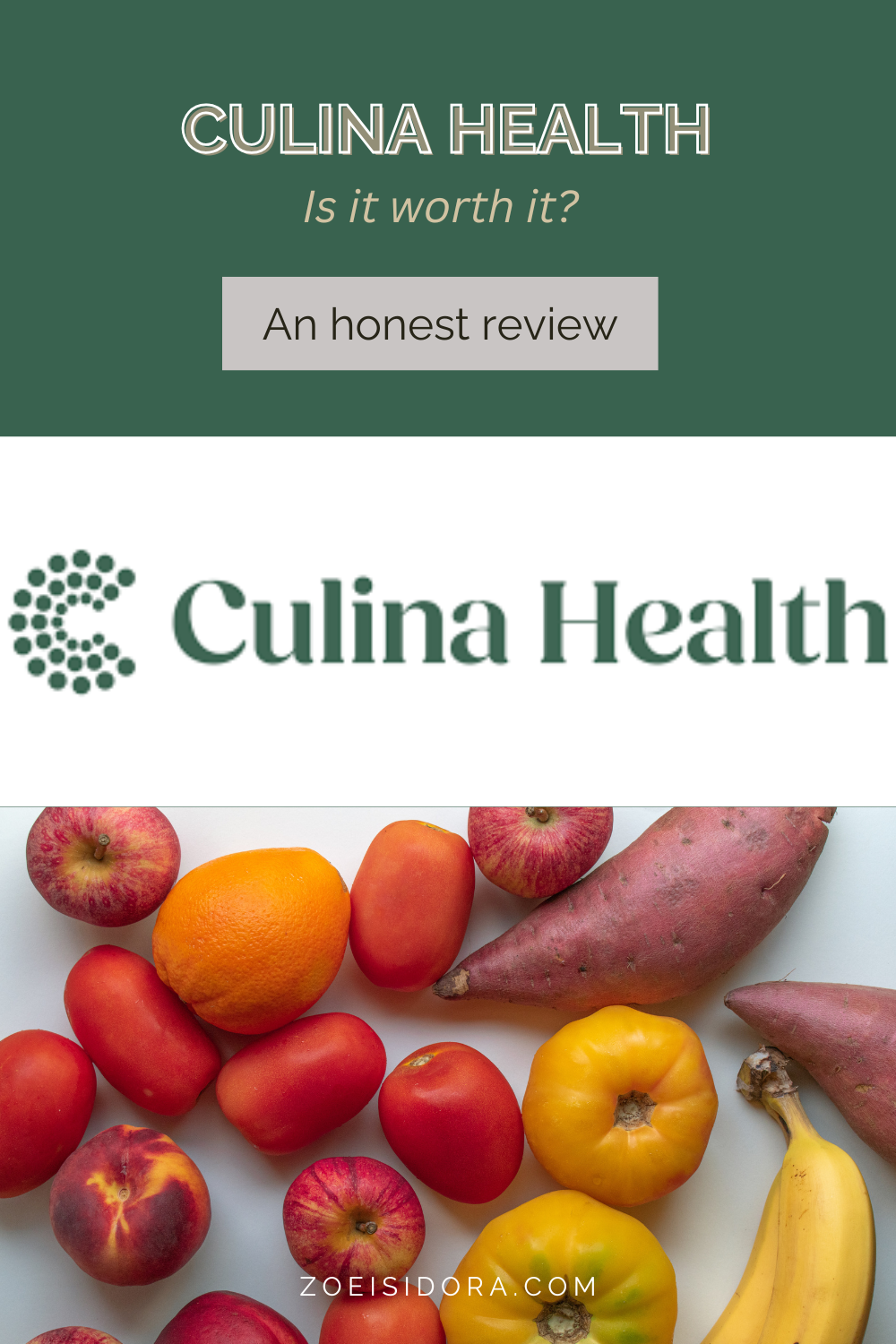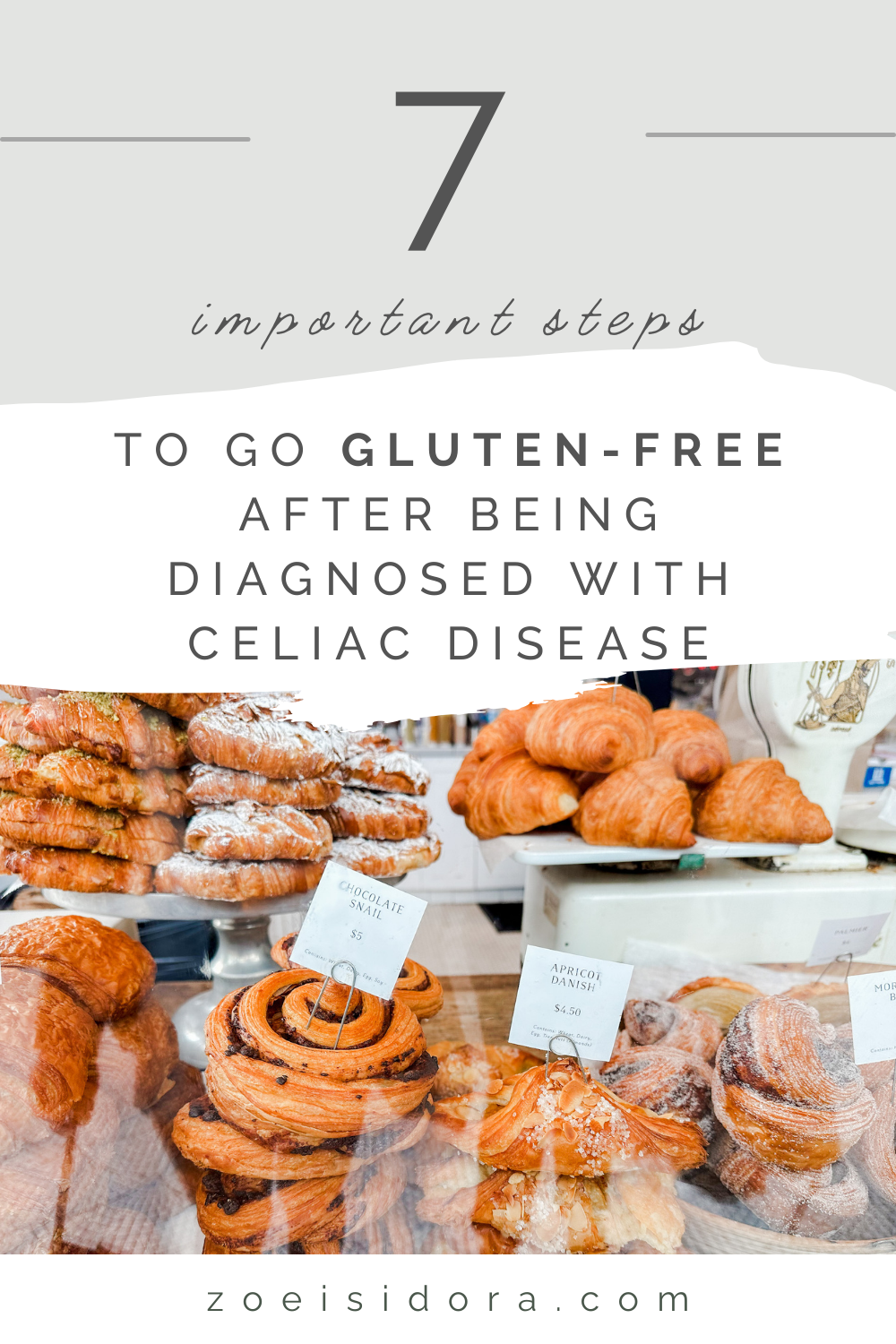7 steps to go gluten-free: A complete gluten-free guide
How to go gluten-free after being diagnosed with Celiac disease
When I was first diagnosed with Celiac, my doctor gave me zero guidance or direction on how to go gluten-free. I didn’t even know what gluten was! I had so many questions, and he had no time for answers. I think I may have been handed a pamphlet and sent on my way.
After talking with other Celiacs, I’m surprised how many people experienced the same lack of direction or guidance on how to go gluten-free. Whether you’re Celiac or just avoiding gluten for health reasons, I’m here to explain EXACTLY how to go gluten-free, avoid cross contamination, and navigate life with a new gluten-free diet.
As your gluten-free BFF, I’m here to make things easy for you. Following a gluten-free diet takes time and care at first, but once you get the hang of it, you’ll be on autopilot. It gets easier, I promise! *Disclaimer: I am not a licensed healthcare practitioner. This post is not sponsored. All opinions expressed in this post are my own.*
Without further ado, let’s jump into your guide to going gluten-free after first being diagnosed with Celiac!
Step 1: Get to Know Gluten
What is gluten?
First, I’m going to start with the basics by explaining what gluten actually is. If you know this, feel free to skip ahead. If you don’t know what gluten is, no need to hide. I also didn’t know what gluten was when I was first diagnosed with Celiac, and I was surprised to find gluten hiding in many of the regular foods I was eating.
Gluten is a protein found in wheat (wheatberries, durum, emmer, semolina, spelt, farina, farro, graham, KAMUT®, wheat and einkorn), barley, rye, and triticale (Celiac.org).
Essentially, gluten acts as a binding agent and is added to many foods to improve texture. Gluten, or byproducts of wheat, barley, and rye can be lurking in many of the regular foods you are eating.
The main foods you need to steer clear of include:
- Pasta, bread, muffins, cookies, and other baked goods (except if they’re certified gluten-free)
- Orzo (this is actually a wheat pasta!)
- Anything made with All-Purpose Flour or another wheat, barley, rye or triticale flour
- Oats and corn (while these are technically gluten-free, you may need to avoid them. I explain this further below!)
As a rule of thumb, I NEVER eat packaged food unless it is certified gluten-free. Always look for a certified Gluten-Free symbol on a food label, or the words “gluten-free.”
Should I be concerned if a product is made in a shared facility with wheat?
In the US and Europe, packaged foods are required to list major allergens. If a package is not labeled “gluten-free,” I always look for the allergen statement. I will often come across a packaged food that says, “Made in a shared production facility with wheat.” In this case, STEER CLEAR! Celiacs can be extremely sensitive to the tiniest trace of gluten cross-contamination (although everyone has different reactions), so I think it’s best to play it safe.
For those who don’t know, “cross-contamination” essentially describes when gluten comes into contact with something you are going to eat or use to prepare food, thus contaminating your food with gluten and rendering it dangerous for consumption.
What are hidden sources of gluten I need to be aware of?
When you are reading an ingredient label, gluten is often hidden in ingredients such as:
- “Natural flavorings”
- “Malt” or “malted barley extract”
- Food coloring
- Distilled vinegar (if not labeled gluten-free, this could be a wheat-derived vinegar)
- Yeast (may be derived from brewer’s yeast, which is NOT gluten-free)
- Pepto-bismol and other medications / vitamins that are not labeled gluten-free
What are common foods that contain gluten?
Gluten, either explicitly listed as “wheat gluten” or another sneaky ingredient derived from wheat, barley, or rye, can be hidden in the following foods:
- Ketchup, mustard, mayonnaise
- Sauces
- Salad dressings
- Cereal
- Ice cream bars
- Trail mix / granola bars
- Tofu or other soy products
- Alcohol (beer, wheat-derived vodka, and mixed drinks)
What’s the deal with oats, corn, and rice? Are oats, corn, and rice gluten-free?
Oats: Oats are a yellow flag – proceed with caution, and only eat certified gluten-free oats!
While oats are technically gluten-free, they may be grown next to fields of wheat, barley, or rye. If you are Celiac, there is a risk of cross-contamination with gluten. There may be traces of gluten on your oat products that can cause symptoms. In other scenarios, oats may have been processed in a facility that uses shared equipment with wheat, barley, or rye.
In addition, oats contain a protein called avenin, which resembles the structure of a gluten protein. Many Celiacs or other gluten-sensitive individuals react to oats the same way they react to gluten. I personally cannot tolerate oats at all, even if they are labeled gluten-free. My symptoms mimic a gluten reaction.
If you are recently gluten-free or have just been diagnosed with Celiac, I would steer clear of oats for at least a few months until your body has time to heal and calm down inflammation while on a gluten-free diet. Once your body is in healing mode, then you can try reintroducing certified gluten-free oats in small doses to see if your body can handle them. If you have any symptoms from oats (this can range from abdominal pain, digestive distress/bloating, headaches, or skin issues / dermatitis), then stop eating oats right away.
Corn: Corn is a yellow flag – proceed with caution, and only eat certified gluten-free corn!
Corn is similar to oats in that while it is technically gluten-free, it may be grown or processed with gluten-containing grains. Only eat corn, polenta, or other by-products of corn that are specifically labeled gluten-free.
Corn contains a protein called zein, which has been shown to mimic the molecular structure of gluten, thus causing reactions in people with Celiac disease. Additionally, zein releases another protein called zonulin, which increases intestinal permeability and impairs gut barrier function.
For patients who have just been diagnosed with Celiac, I recommend avoiding corn, like oats, for several months until your body has healed. Then, you can try slowly reincorporating corn into your diet. If you do not experience symptoms, you might be fine eating corn. If your symptoms persist or get worse, stop eating corn. There are so many grain-free products on the market now, that you won’t even miss corn!
Rice: Rice is a green flag – you should be fine as long as it’s certified gluten-free!
Rice is typically well-tolerated in patients with Celiac disease. Still, only eat certified gluten-free rice (to ensure there is no cross-contamination with gluten-containing grains). Again, if you are eating rice and believe it to be causing symptoms, back off and talk to your health care practitioner.
Step 2: Learn how to prepare your food
How to prepare food when you are gluten-free:
It is important to avoid cross-contamination when you are gluten-free. Again, cross contamination is essentially when your food comes into contact with traces of gluten, rendering it unsafe for consumption. Cross contamination can occur while you are prepping, cooking, or even serving your food.
It’s important to always use a clean, dedicated gluten-free knife, spatula, cutting board, food prep space, pots and pans, sponges, toasters, baking trays, dish towels, and other items that may come into contact with gluten. I recommend using plastic or silicone spoons and cutting boards, as gluten particles can get stuck in the grain of wooden cutting boards and utensils.
If you are using shared condiments, such as butter, jelly, mayonnaise, ketchup, or hummus, make sure the containers do not come into contact with gluten. All it takes is someone putting a knife in butter, slathering the knife over a piece of bread, and then putting the knife back in the butter to contaminate all of the butter.
To give you an example, if a friend gives me a piece of gluten-free bread but dips the knife into a jar of jelly that may have remnant breadcrumbs, it is highly likely that I will get sick. If someone is making gluten-free pasta but stirs the pot with a wooden spoon that had just been used to touch gluten or regular pasta, then my gluten-free pasta would be contaminated and I would get sick.
Having control of your cooking utensils and understanding how your food was prepared can limit the chances of accidental cross contamination.
Step 3: Communicate your dietary restriction
Communication is key – with roommates, family members, friends, and restaurants:
With roommates or family: If you are living with roommates or family members who are not gluten-free, explain what gluten is and the importance of remaining gluten-free for your health.
If possible, I recommend having your own shelf in the refrigerator that can be dedicated to your gluten-free food. Always label your condiments to ensure they are gluten-free and only used by you. While it may not be necessary to have gluten-free pots and pans, make sure they are thoroughly washed before use. The dishwasher normally does the trick!
With friends: It can definitely be a shock to friends when you first tell them you’re gluten-free. They need to adjust to your new diet just as much as you do! Explain that you’re gluten-free right away – don’t wait until a friend invites you over for pizza and beer!
If friends don’t respect your new diet, or try to pressure you into eating gluten, they’re not the right friends for you. If anyone says, “just one bite of bread won’t hurt you,” explain to them the importance of being gluten-free for your health and longevity. At the end of the day, one bite can hurt.
With restaurants: Most restaurants nowadays across the world (especially in America, Canada, Europe, and Israel) are well-versed in gluten-free protocols. When ordering, I always mention that I have a “gluten allergy” and to “be aware of cross-contamination.” While Celiac disease is an autoimmune disease and not an allergy, using the word “allergy” at a restaurant puts waiters and kitchen staff on high alert, and they are more likely to be careful.
If a menu doesn’t list items as gluten-free, be sure to ask your waiter for more information. I always look up restaurant reviews on Google or Yelp and search for “gluten,” “gluten-free,” or “celiac” to see if any previous diners can shed light on their experience eating gluten-free at that particular restaurant.
Note that some restaurants, for legal reasons, will let you know that they can’t guarantee your meal will be free of gluten cross-contamination. This happened to me many times while I was living in London. In those cases, use your best judgment. If a salad restaurant told me they couldn’t guarantee my meal would be gluten-free, I would probably proceed with ordering as long as they promised the kitchen staff would be careful. However, if I was attempting to order a meal from a pizza joint… well I just wouldn’t order a gluten-free meal from a pizza place, because accidents happen!
Step 4: Test for other allergies / intolerances
Celiacs may have other food allergies, intolerances, or sensitivities due to your gut lining being compromised. It’s worth working with a dietician, gastroenterologist, or allergist to test for other food sensitivities. This is especially important if you’re still experiencing symptoms, even after going gluten-free.
Step 5: Supplement – with approval from your health care practitioner, of course!
Celiac disease is a condition in which tiny hair-like structures called villae, which line your small intestines, are damaged. Certain supplements can speed up your intestinal healing and may help impaired digestion.
I supplement with the following, which may also be helpful for you:
- L-Glutamine: L-Glutamine is an amino acid that is the primary fuel source for cells lining the small intestine. If you have Celiac disease, your small intestinal wall is compromised. Taking 3-5 grams of L-Glutamine daily, on any empty stomach, may help your cells regenerate faster, reducing pain and easing digestion. I love the L-Glutamine from Klaire Labs and have been using it for nearly 2 years now. I mix a scoop with water and take it before bed. It’s tasteless and hypoallergenic. I definitely attribute much of my gut repair to this product!
- Digestive Enzymes: Digestive enzymes help your body break down protein, fats, fiber, and dairy to enhance nutrient absorption. While your body naturally produces enzymes to break down food and aid in digestion, individuals with Celiac disease may have impaired digestive enzyme production. Thus, it may be necessary or helpful to supplement in the early stages of Celiac recovery. I found some immediate relief when taking digestive enzymes with my meals. I love Pure Encapsulations’ Digestive Enzymes with Betaine HCL. I take two enzymes, in capsule form, 10 minutes before meals. I usually only take them as needed, when my digestion is “off.” I definitely notice a difference in my overall feelings of digestion, bloating, and well-being when I take these enzymes.
- Saccharomyces Boulardi: Saccharomyces Boulardi is a type of yeast that functions as a probiotic to restore a healthy gut bacteria. This strain of yeast has antimicrobial properties that can inhibit the growth of harmful bacteria in the gut, restore levels of Short Chain Fatty Acids, and support the regeneration of intestinal microbiota. Saccharomyces is clinically studied to reduce diarrhea, treat GI-tract infections (including C. difficile and H. pylori) and eradicate Small Intestinal Bacterial Overgrowth (SIBO). My dietician recommended I take Saccharomyces Boulardi to support my microflora instead of a standard probiotic pill. Saccharomyces has clinical research and studies to back its efficacy, while probiotic pills come in thousands of brands with conflicting evidence on effectiveness. I have personally been taking Saccharomyces for the past 14 months, and I’ve noticed a huge improvement in my digestion, immune functioning, mood, and overall wellbeing.
Step 6: Work with a Dietician (who specializes in Celiac disease!)
I began working with a registered dietician who specializes in Celiac disease in February 2024. Every aspect of my life has truly transformed, because I am eating an optimal diet for Celiac disease recovery! My cholesterol has decreased, my digestion improved, my number of food reactions has decreased, and I look and feel so much better!
I use Culina Health, an online dietician provider. To start the process, you fill out a questionnaire about your health history and what you are seeking to gain from dietician support. Culina Health matches you with a dietician who meets your requirements. From Celiac disease, to acid reflux, to SIBO, to weight loss, to athletic nutrition – Culina Health has a range of staff with varying specialties. It’s 100% covered by my insurance, with no co-pay. Culina Health makes dietician support accessible, without any barriers, by working with a variety of insurance providers. It’s so helpful to have Nicole, my dietician, review my diet and help me pinpoint hidden sources of gluten in food brands and even my food preparation. I think everyone should have a licensed professional who has an outside, objective, bird’s-eye view of your nutrition. Even the smallest tweaks have made a big difference. This post is totally not sponsored and represents my objective opinion!
Step 7: Stay Positive!
It can be surprising, sad, relieving to have a diagnosis, and a whole range of emotions when you are first diagnosed with Celiac disease. Just know that Celiac disease is genetic – it’s out of your control, and you have no reason to feel bad for having or developing it! You WILL feel better. Relief is coming! While it may feel like going gluten-free requires a lot of time, energy, and stress at first, you will end up more energized and healthy if you stick to a strict gluten-free protocol.
The most important thing to remember during your gluten-free journey is to stay positive! Hope is all we have at the end of the day :)
I hope this article helped you understand how to go gluten-free after first being diagnosed with Celiac disease! As your gluten-free BFF, feel free to leave a comment and I will try my best to respond.




